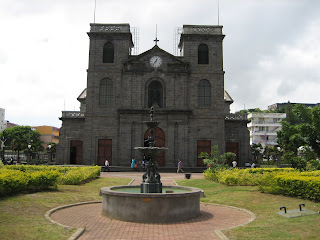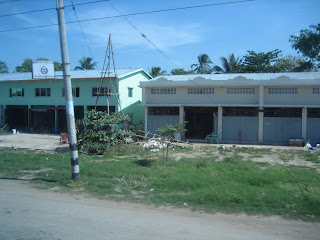




We have traveled for 19 days from Capetown, South Africa to Lisbon, Portugal. The west coast of Africa is not much of a tourist destination. Lome, Togo(picture of low-rise apartments) and Takoradi, Ghana (picture of 2-storey market)remain mostly undeveloped. These are towns rather than cities and have gone almost nowhere since independence They are less than shabby. Dakar is a city with considerable development in the peninsula of the old French colony. High rises here are mostly drab(one under construction in picture!) and the downtown is shabby. It is as if most development ceased at some time 30 years ago. The port facilities are extensive though and the rail station at the port is very modern. It is over 1500 miles from Ghana to Senegal and another 1500 from Senegal to Lisbon. The entrance to Lisbon’s harbor, the Tagus River, seemed spectacular this morning. The clear skies and cool air were invigorating after months in the equatorial zones. Lisbon is rather charming and has enjoyed several fresh coats of paint and stucco in the past 10 years. There is a tremendous amount to see from the street level and quite a number of museums that seem worth exploring. Many of the public squares and monuments have been cleaned up too(pictures). The lower downtown is quaint and we spent a bit of time exploring the fabric and trim stores. The selection was good. Prices, though in Euros, seemed below what one would pay for goods of similar quality(if you could find them in a medium-sized city in the US). It appears the Spanish banks are here in force and there is even a new El Corte Ingles in the city. Portugal has recently accepted a bailout package from the European Union and the IMF, so it is unclear exactly what the near-term portends….but it will be painful. Portugal has spent a lot of money restoring its capital city. It needed to be done. But the bill has come due. We will arrive in London in 3 days and pick up the ship to America on 10 May.













































